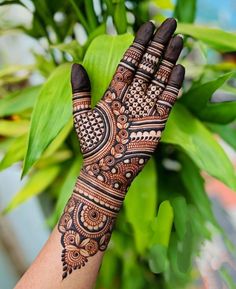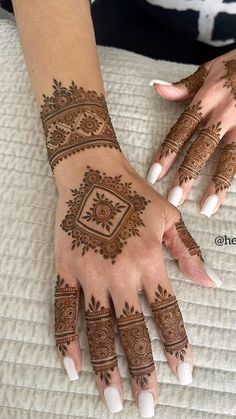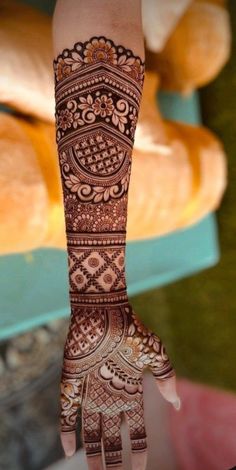Mehendi Design II
Welcome to “Mastering Mehendi,” where we embark on a journey into the captivating world of henna artistry. Mehendi, also known as henna, has adorned the hands and feet of individuals across cultures for centuries, serving as a symbol of beauty, celebration, and tradition. In this class, we will explore the techniques, patterns, and cultural significance of Mehendi design, empowering you to create stunning and meaningful designs with confidence and skill.

Chapter 1: Understanding Mehendi
Mehendi, derived from the leaves of the henna plant, holds deep cultural significance in various traditions worldwide. From weddings and festivals to religious ceremonies and personal adornment, Mehendi plays a central role in many cultures, symbolizing auspiciousness, blessings, and joy.
Materials and Tools: Before diving into the art of Mehendi design, it’s essential to familiarize yourself with the materials and tools required:
- Henna Paste: Prepared from finely ground henna leaves, henna paste serves as the medium for creating Mehendi designs.
- Applicator Cones: These fine-tipped cones are used to apply henna paste onto the skin, allowing for precise and intricate designs.
- Essential Oils: Adding essential oils like eucalyptus or tea tree oil to henna paste helps enhance color and longevity.
- Design Templates: While freehand Mehendi is an art form in itself, beginners may find it helpful to use design templates or stencils for guidance.
Preparing the Skin: Proper skin preparation is crucial for achieving vibrant and long-lasting Mehendi designs. Follow these steps to prepare the skin:
- Cleanse: Thoroughly cleanse the skin with soap and water to remove any dirt, oil, or residue.
- Exfoliate: Gently exfoliate the skin to remove dead cells and create a smooth canvas for Mehendi application.
- Moisturize: Apply a light moisturizer to hydrate the skin and prevent it from becoming too dry, which can hinder henna absorption.
Chapter 2: Basic Mehendi Designs
Now that we’ve covered the basics, let’s delve into creating simple yet elegant Mehendi designs:

Line and Dot Techniques: Start by familiarizing yourself with basic Mehendi techniques, such as creating lines, dots, and shapes:
- Lines: Use steady pressure to draw straight, curved, or wavy lines of varying thickness.
- Dots: Dots are a versatile element in Mehendi design, serving as accents or fillers between larger motifs.
- Shapes: Experiment with basic shapes like circles, triangles, and squares to create geometric patterns.
Beginner Patterns: Practice creating beginner-friendly Mehendi patterns, including:
- Floral Motifs: Flowers are a staple in Mehendi design, representing beauty, femininity, and nature’s bounty.
- Paisley Patterns: Paisleys, or “buta” motifs, are teardrop-shaped designs commonly found in Mehendi art, symbolizing fertility and abundance.
- Geometric Designs: Explore simple geometric patterns like grids, diamonds, and chevrons for a modern twist on traditional Mehendi.
Practice Exercises: Dedicate time to honing your Mehendi skills with these practice exercises:
- Hand Gestures: Practice drawing Mehendi designs on paper using hand gestures to simulate the movement of applying henna with an applicator cone.
- Repetition and Variation: Repeat basic motifs and patterns to build muscle memory, then experiment with variations to develop your unique style.
- Speed and Consistency: Work on achieving a steady hand and consistent pressure for uniform lines and shapes in your Mehendi designs.
Chapter 3: Intermediate Mehendi Designs
Now that you’ve mastered the basics, let’s elevate your Mehendi game with more intricate designs:
Intricate Patterns: Explore the world of intricate Mehendi patterns, combining various elements like vines, leaves, swirls, and dots to create stunning compositions.
Bridal Mehendi: Bridal Mehendi holds a special place in henna artistry, with designs ranging from elaborate full-hand patterns to intricate motifs symbolizing love, prosperity, and marital bliss.
Symmetry and Balance: Achieving symmetry and balance is essential in Mehendi design, creating visually pleasing compositions that flow seamlessly across the skin. Experiment with mirrored motifs and symmetrical layouts for harmonious designs.
Chapter 4: Advanced Mehendi Techniques
Ready to take your Mehendi skills to the next level? Let’s explore advanced techniques for creating show-stopping designs:
Shading and Filling: Add depth and dimension to your Mehendi designs with shading and filling techniques, using varying densities of henna paste to create light and shadow effects.

Negative Space: Harness the power of negative space in Mehendi design, strategically leaving areas of the skin bare to create contrast and highlight intricate patterns.
Incorporating Cultural Elements: Celebrate the richness of cultural heritage by incorporating traditional symbols, motifs, and themes into your Mehendi designs, paying homage to diverse cultural traditions and customs.
Chapter 5: Tips for Perfecting Your Mehendi Designs
As you continue your Mehendi journey, keep these tips in mind to refine your skills and create breathtaking designs:
Practice Regularly: Consistent practice is key to mastering Mehendi design. Set aside dedicated time each day to practice different techniques and experiment with new ideas.
Experiment and Innovate: Don’t be afraid to step outside your comfort zone and experiment with unconventional patterns, styles, and techniques. Embrace creativity and innovation to develop your unique Mehendi aesthetic.
Seek Inspiration: Draw inspiration from a variety of sources, including traditional Mehendi designs, nature, art, and architecture. Keep an inspiration journal or mood board to collect ideas and reference materials for future designs.
Conclusion:
Congratulations on completing “Mastering Mehendi!” Armed with the knowledge, skills, and inspiration gained from this class, you’re well-equipped to embark on your Mehendi journey with confidence and creativity. Whether you’re adorning yourself for a special occasion or sharing your Mehendi artistry with others, may each design you create be a testament to the beauty, tradition, and cultural richness of Mehendi.
Happy designing!

